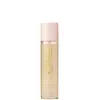What's inside
What's inside
 Key Ingredients
Key Ingredients

 Benefits
Benefits

 Concerns
Concerns

No concerns
 Ingredients Side-by-side
Ingredients Side-by-side

Water
Skin ConditioningIsononyl Isononanoate
EmollientPolyglyceryl-10 Oleate
Skin ConditioningPropanediol
SolventGlycerin
HumectantPanthenol
Skin ConditioningEctoin
Skin ConditioningBeta-Glucan
Skin ConditioningCeramide NP
Skin ConditioningCeramide AP
Skin ConditioningCeramide EOP
Skin ConditioningMagnolia Officinalis Bark Extract
AntimicrobialXanthan Gum
EmulsifyingPhytosphingosine
Skin ConditioningCaprylyl Glycol
EmollientCholesterol
EmollientCarbomer
Emulsion StabilisingSodium Lauroyl Lactylate
EmulsifyingSodium Stearoyl Glutamate
CleansingPhenoxyethanol
PreservativeEthylhexylglycerin
Skin ConditioningCitric Acid
BufferingWater, Isononyl Isononanoate, Polyglyceryl-10 Oleate, Propanediol, Glycerin, Panthenol, Ectoin, Beta-Glucan, Ceramide NP, Ceramide AP, Ceramide EOP, Magnolia Officinalis Bark Extract, Xanthan Gum, Phytosphingosine, Caprylyl Glycol, Cholesterol, Carbomer, Sodium Lauroyl Lactylate, Sodium Stearoyl Glutamate, Phenoxyethanol, Ethylhexylglycerin, Citric Acid
Butyl Methoxydibenzoylmethane 3%
UV AbsorberHomosalate 0.5%
Skin ConditioningEthylhexyl Salicylate 5%
UV AbsorberOctocrylene 10%
UV AbsorberAlcohol Denat.
AntimicrobialButyloctyl Salicylate
Skin ConditioningDiisopropyl Adipate
EmollientLauryl Lactate
EmollientDicaprylyl Carbonate
EmollientSodium Hyaluronate
HumectantSodium Hyaluronate Crosspolymer
HumectantTetrahexyldecyl Ascorbate
AntioxidantTocopherol
AntioxidantCitrus Aurantifolia Oil
CleansingLitsea Cubeba Fruit Oil
MaskingCitrus Aurantium Dulcis Peel Oil
MaskingMentha Viridis Leaf Oil
AstringentCitrus Aurantium Peel Oil
Hydrogenated Castor Oil
EmollientOryza Sativa Bran Extract
Skin ConditioningRicinus Communis Seed Oil
MaskingGlycerin
HumectantTriethyl Citrate
MaskingGamma-Decalactone
PerfumingMaltol
MaskingDimethylheptenal
PerfumingHexyl Acetate
MaskingEthyl Butyrate
PerfumingVa/Butyl Maleate/Isobornyl Acrylate Copolymer
T-Butyl Alcohol
PerfumingMica
Cosmetic ColorantWater
Skin ConditioningPropanediol
SolventPolyglutamic Acid
Skin ConditioningCitric Acid
BufferingSodium Benzoate
MaskingLimonene
PerfumingGeraniol
PerfumingGeranyl Acetate
PerfumingTerpineol
Masking3,6-Nonadienol
PerfumingTin Oxide
AbrasiveCI 77891
Cosmetic ColorantCI 77491
Cosmetic ColorantButyl Methoxydibenzoylmethane 3%, Homosalate 0.5%, Ethylhexyl Salicylate 5%, Octocrylene 10%, Alcohol Denat., Butyloctyl Salicylate, Diisopropyl Adipate, Lauryl Lactate, Dicaprylyl Carbonate, Sodium Hyaluronate, Sodium Hyaluronate Crosspolymer, Tetrahexyldecyl Ascorbate, Tocopherol, Citrus Aurantifolia Oil, Litsea Cubeba Fruit Oil, Citrus Aurantium Dulcis Peel Oil, Mentha Viridis Leaf Oil, Citrus Aurantium Peel Oil, Hydrogenated Castor Oil, Oryza Sativa Bran Extract, Ricinus Communis Seed Oil, Glycerin, Triethyl Citrate, Gamma-Decalactone, Maltol, Dimethylheptenal, Hexyl Acetate, Ethyl Butyrate, Va/Butyl Maleate/Isobornyl Acrylate Copolymer, T-Butyl Alcohol, Mica, Water, Propanediol, Polyglutamic Acid, Citric Acid, Sodium Benzoate, Limonene, Geraniol, Geranyl Acetate, Terpineol, 3,6-Nonadienol, Tin Oxide, CI 77891, CI 77491
 Reviews
Reviews

Ingredients Explained
These ingredients are found in both products.
Ingredients higher up in an ingredient list are typically present in a larger amount.
Citric Acid is an alpha hydroxy acid (AHA) naturally found in citrus fruits like oranges, lemons, and limes.
Like other AHAs, citric acid can exfoliate skin by breaking down the bonds that hold dead skin cells together. This helps reveal smoother and brighter skin underneath.
However, this exfoliating effect only happens at high concentrations (20%) which can be hard to find in cosmetic products.
Due to this, citric acid is usually included in small amounts as a pH adjuster. This helps keep products slightly more acidic and compatible with skin's natural pH.
In skincare formulas, citric acid can:
While it can provide some skin benefits, research shows lactic acid and glycolic acid are generally more effective and less irritating exfoliants.
Most citric acid used in skincare today is made by fermenting sugars (usually from molasses). This synthetic version is identical to the natural citrus form but easier to stabilize and use in formulations.
Read more about some other popular AHA's here:
Learn more about Citric AcidGlycerin is already naturally found in your skin. It helps moisturize and protect your skin.
A study from 2016 found glycerin to be more effective as a humectant than AHAs and hyaluronic acid.
As a humectant, it helps the skin stay hydrated by pulling moisture to your skin. The low molecular weight of glycerin allows it to pull moisture into the deeper layers of your skin.
Hydrated skin improves your skin barrier; Your skin barrier helps protect against irritants and bacteria.
Glycerin has also been found to have antimicrobial and antiviral properties. Due to these properties, glycerin is often used in wound and burn treatments.
In cosmetics, glycerin is usually derived from plants such as soybean or palm. However, it can also be sourced from animals, such as tallow or animal fat.
This ingredient is organic, colorless, odorless, and non-toxic.
Glycerin is the name for this ingredient in American English. British English uses Glycerol/Glycerine.
Learn more about GlycerinPropanediol is an all-star ingredient. It softens, hydrates, and smooths the skin.
It’s often used to:
Propanediol is not likely to cause sensitivity and considered safe to use. It is derived from corn or petroleum with a clear color and no scent.
Learn more about PropanediolWater. It's the most common cosmetic ingredient of all. You'll usually see it at the top of ingredient lists, meaning that it makes up the largest part of the product.
So why is it so popular? Water most often acts as a solvent - this means that it helps dissolve other ingredients into the formulation.
You'll also recognize water as that liquid we all need to stay alive. If you see this, drink a glass of water. Stay hydrated!
Learn more about Water